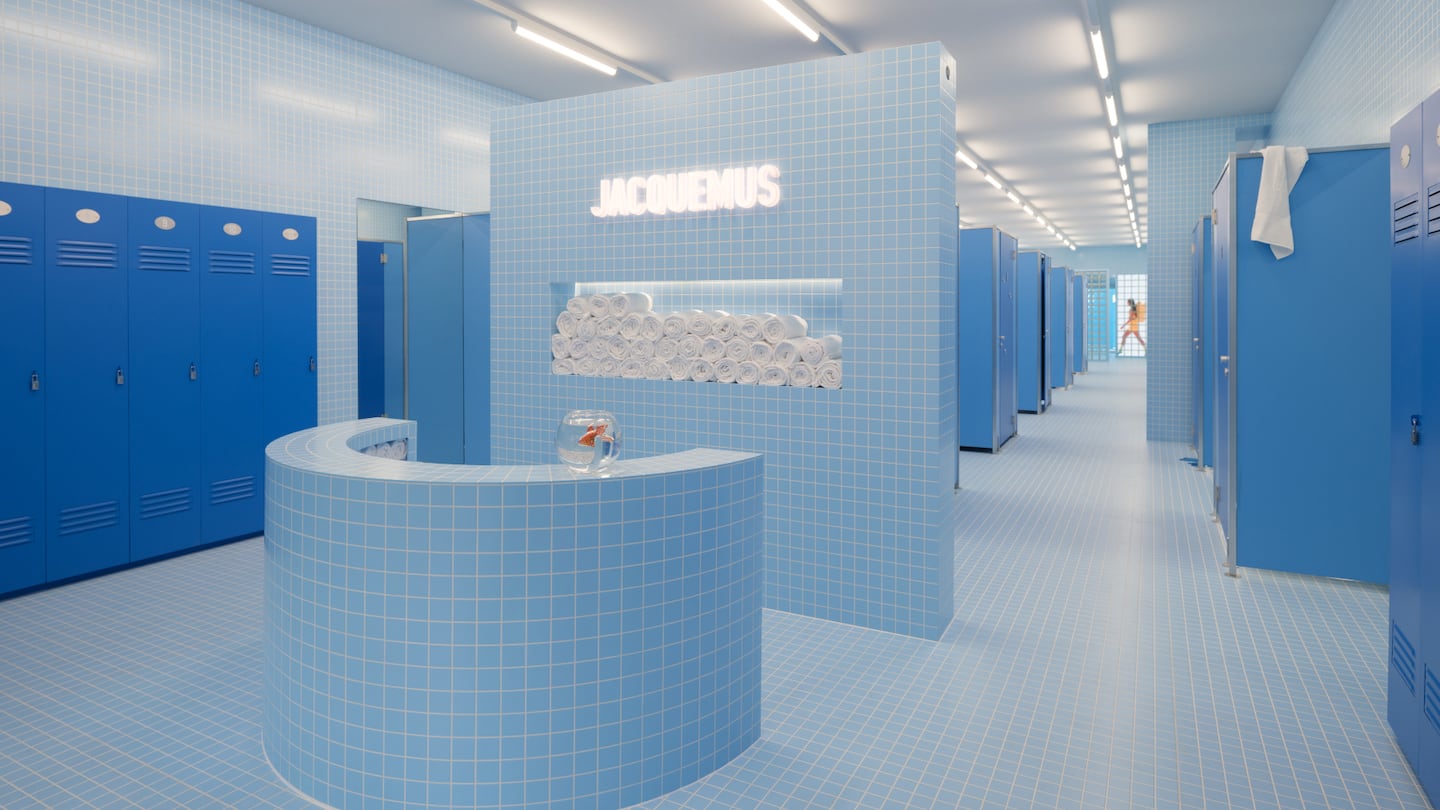
The Business of Fashion
Agenda-setting intelligence, analysis and advice for the global fashion community.

Agenda-setting intelligence, analysis and advice for the global fashion community.

London-based sneaker reseller Kick Game grew 400 percent last year, fuelled almost exclusively by digital sales. But in 2022, Kick Game is instead betting big on physical retail, with plans to open four stores across the UK and Europe by next year.
As the pandemic-induced e-commerce boom recedes, Kick Game and dozens of other brands are targeting growth via brick-and-mortar stores. In the US, major retailers announced 9.2 percent more store openings in the year-to-date compared to the same period in 2021, while major UK retailers have announced 30.6 percent more openings, according to data from Coresight Research. And rightfully so. While overall foot traffic has yet to return to 2019 levels, a number of apparel retailers have seen record sales at their physical outposts.
“There was initially a concern that the pandemic would expedite the trend of brands becoming more reliant on e-commerce versus brick-and-mortar, but to a large extent across many categories, the opposite has happened,” said Mike O’Neill, vice chairman, retail services, at real estate brokerage Cushman & Wakefield.
But while consumers may be shopping in person again, the formula for brick-and-mortar retail has evolved since the pandemic. For one, the stakes are higher because shoppers have heightened expectations around service. They want the flexibility and ease of navigation that comes with digital shopping, but with the ability to try on products and get advice in-store. Retailers are also having to work harder to attract shoppers, who need a more enticing reason to step foot in a store, whether that’s to experience something novel or film a TikTok.
ADVERTISEMENT
Brands have long used their stores as event spaces, hosting product launches or VIP parties to drive customer loyalty, but today, this practice has become standard. In fact, some retailers are designing new stores with a format ideal for hosting large groups of people. And the in-store events themselves are also more creative and collaborative across fields, such as album launches, speaker sessions and communal content creation.
Pop-ups, another tried-and-true tactic in physical retail, are also evolving. Recent pop-ups look more like conceptual art shows than a retail storefront, designed to be visually striking with minimal products on show. For instance, Balenciaga’s ongoing pop-ups in London and Bangkok which promote the brand’s Le Cagole bag, feature rooms covered entirely in a bright pink fur-like material — designed to draw in fans of ASMR, a niche genre of YouTube videos that evoke a relaxing sensation.
Below, BoF explores three ever-shifting components of the in-store experience that retailers should consider as they look to open new locations.
Serving the Customer Online and Off
With Google at their fingertips, customers today expect world-class expertise from store personnel when they visit their favourite brands.
Watches of Switzerland, for instance, made major investments last year in hiring and training customer service personnel both online and off, ensuring that customers can shop however they’d like, hopping back and forth between the two channels at various points of their journey, said Brian Duffy, the company’s chief executive.
For instance, shoppers can begin the process online, chatting with one of 40 trained salespeople who give personalised product recommendations and showcase physical products over video call. They can then make an appointment for one-on-one shopping in store, where another associate will greet them with a glass of champagne and a selection of products based on their preferences as discussed earlier online.
Today, 40 percent of Watches of Switzerland sales are made through these one-on-one appointments that begin online, up from around 10 percent in 2019.
ADVERTISEMENT
The Next Level of In-Store Events
One night in March, Swedish sneaker and streetwear label Axel Arigato turned its London flagship into a nightclub: the cash register became a DJ booth, and a mannequin display area turned into an improvised stage. But the party wasn’t for a product launch or any other brand milestone. It was an album launch party for British singer Jordan Stephens.
Offering up store space for one-off events like album or book launches can boost the credibility of fashion companies among trendsetting creatives and buzzy subcultures, welcoming a community of fans — rather than just consumers — who can align with the brand on everything from music to politics.
You’re much more likely to return to a brand’s physical space as a shopper if you’ve already had a good experience there.
“Community events boost long-term loyalty and connection with people,” said Abi Buller, an analyst at The Future Laboratory, a trend forecasting and brand strategy consultancy. “You’re much more likely to return to a brand’s physical space as a shopper if you’ve already had a good experience there.”
Kick Game, in fact, has designed its two stores to be as much event venues as they are retail outposts. They are minimalist, white-walled multipurposes spaces, allowing the company to quickly transform the space to host parties and shoot content series in-store with big names in the music and sneaker worlds.
By creating viral cultural content inside its stores, Kick Game has convinced shoppers, who typically are between 21 and 27, that they could bump into their favourite rapper, DJ or footballer while trying on a pair of sneakers.
Kick Game — which is on course to reach £55 million ($67.8 million) in revenue this year, up from £30 million in 2021 — now sees these multipurpose retail venues as central to the business’ growth plans. A flagship store is planned for Milan later this year, along with three other new stores in cities across the UK.
ADVERTISEMENT
The Metaverse Effect
Last week, French luxury label Jacquemus opened its latest pop-up in London’s Selfridges department store. Simulating a swimming pool changing room, shoppers can explore (and buy) special edition Jacquemus bags housed in see-through lockers, all coloured swimming-pool blue.
Retailers are augmenting and elevating their physical outlets using materials, design, sensory stimuli and human interaction in ways that only physical spaces can achieve.
Although they may sound over-the-top, these outrageous retail displays serve a purpose, said Buller, of The Future Laboratory. She describes these stores as “hyperphysical” — a step farther than traditional experiential retail, incorporating TikTok-friendly aesthetics and artistic expressions of a brand’s identity beyond its clothing, and an antidote to the growing influence of the metaverse.
Even major retailers with permanent stores are investing in locations with unusual interior design or architectural quirks to draw in shoppers. In the basement of the newly opened joint Uniqlo and Theory flagship on London’s Regent Street, shoppers can browse the brands’ clothing on display in what was a former 1920s barbershop, featuring original equipment and bright Art Deco artefacts from its heyday.
“Retailers are augmenting and elevating their physical outlets using materials, design, sensory stimuli and human interaction in ways that only physical spaces can achieve,” Buller said.
Online sales growth is slowing, returning to its pre-pandemic trajectory. As shoppers head back into the store, their new expectations around service set the stage for the next chapter of retail.
Vaccinated consumers finally returning to their favourite stores are in for a surprise. BoF outlines some of the biggest changes in retail.
Retailers are opening new locations at their fastest pace in years as shoppers visit stores again in numbers rivaling 2019 levels.

Daniel-Yaw Miller is Senior Editorial Associate at The Business of Fashion. He is based in London and covers menswear, streetwear and sport.
As the German sportswear giant taps surging demand for its Samba and Gazelle sneakers, it’s also taking steps to spread its bets ahead of peak interest.
A profitable, multi-trillion dollar fashion industry populated with brands that generate minimal economic and environmental waste is within our reach, argues Lawrence Lenihan.
RFID technology has made self-checkout far more efficient than traditional scanning kiosks at retailers like Zara and Uniqlo, but the industry at large hesitates to fully embrace the innovation over concerns of theft and customer engagement.
The company has continued to struggle with growing “at scale” and issued a warning in February that revenue may not start increasing again until the fourth quarter.